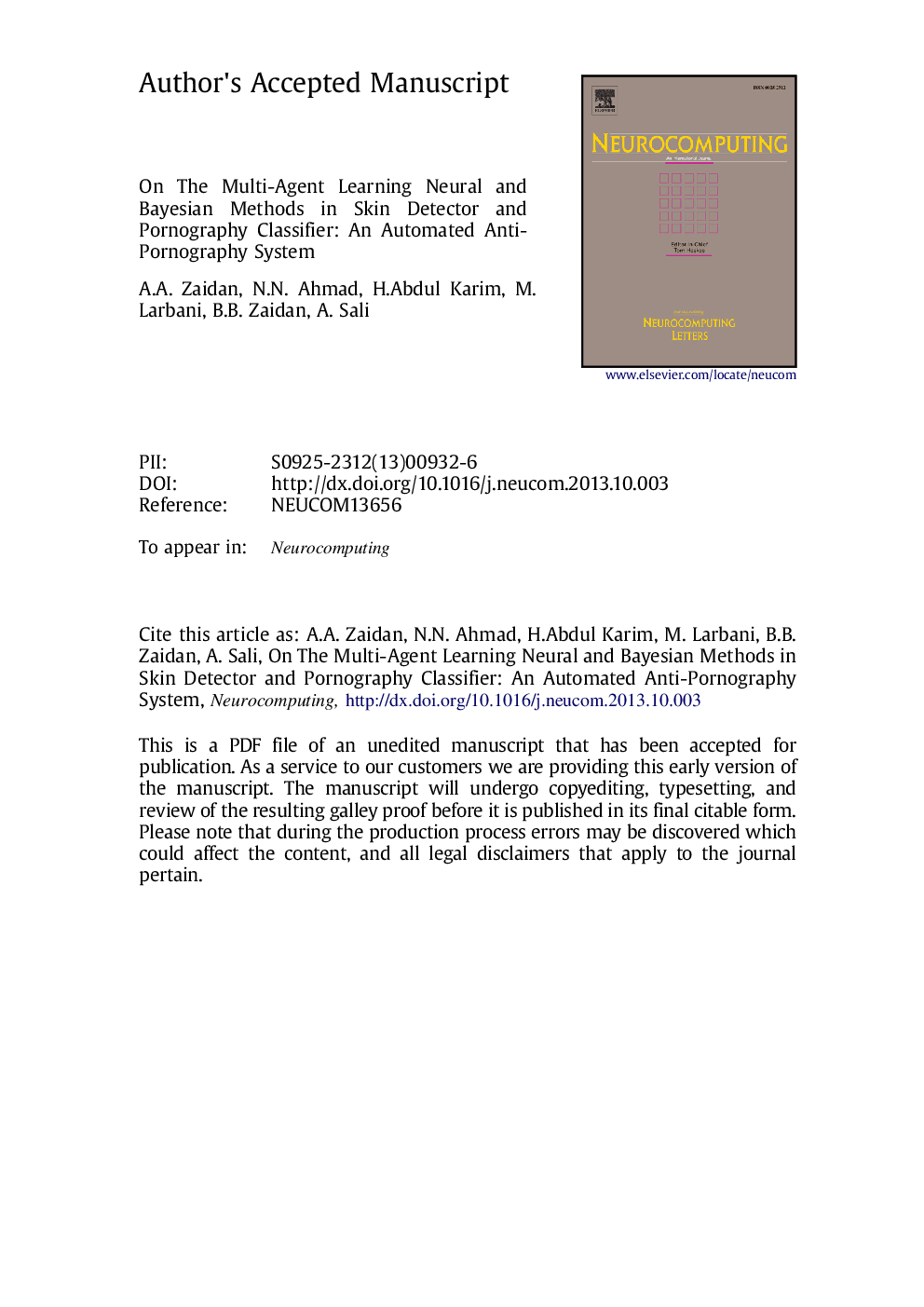| Article ID | Journal | Published Year | Pages | File Type |
|---|---|---|---|---|
| 6866755 | Neurocomputing | 2014 | 36 Pages |
Abstract
The main objective on this study proposed anti-pornography system works on four machine learning methods in two different stages namely skin detector stage and pornography classifier stage. A multi-agent learning is used twice. In the first stage, we propose a multi-agent learning method that combines the Bayesian method with a grouping histogram (GH) technique and the back-propagation neural network with a segment adjacent-nested (SAN) technique based on the YCbCr and RGB colour spaces respectively, to extract skin regions from the image accurately with taking into consideration the problems of the light-changing conditions, skin-like colour and reflection from glass and water. In the second stage, the features from the skin are extracted to classify the images into either pornographic or non-pornographic. Inaccurate classification occurs when different image sizes are used in the existing anti-pornography systems. Thus, this paper proposes a multi-agent learning that combines the Bayesian method with a grouping histogram technique again to extract the features from the skin detection based on YCbCr colour space and the back propagation neural network method using shape features extracted again from skin detection. The classification of the pornographic images becomes more robust to the variation in images sizes. The findings from this study have shown that the proposed multi-agent learning system for skin detection has produced a significant rate of true positives (TP) (i.e., 98.44%). In addition, it has achieved a significant low average rate for the false positives (FP) (i.e., only 0.14%) while the proposed multi-agent learning for pornography classifier has produced significant rates of TP (i.e., 96%). Moreover, it has achieved a significant low average rate of FP (i.e., only 2.67%). The experimental results show that multi-agent learning in the skin detector and pornography classifier are more efficient than other approaches.
Keywords
Related Topics
Physical Sciences and Engineering
Computer Science
Artificial Intelligence
Authors
A.A. Zaidan, N.N. Ahmad, H. Abdul Karim, M. Larbani, B.B. Zaidan, A. Sali,
